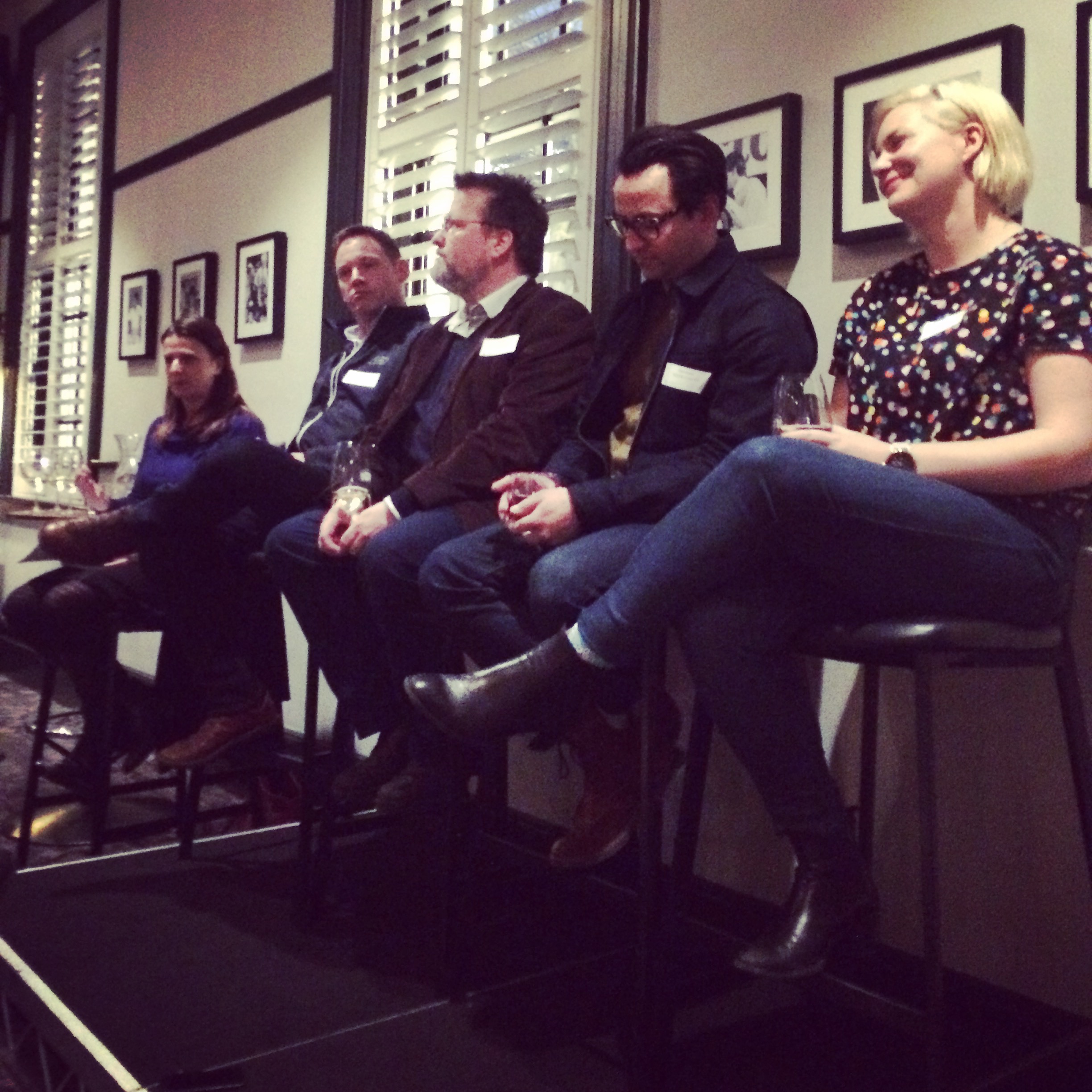Do your homework, and give a shit.
These were two key messages from another engrossing Under the Influence panel discussion held by Wine Communicators of Australia in Victoria. The sell-out event took place at The Imperial Hotel on Monday, 4th September with a panel comprising Clare Burder (The Humble Tumbler), John Harris (Mitchell Harris), Paul Ghaie (Blackhearts & Sparrows), and journalist Max Allen (Financial Review, Gourmet Traveller). It was once again moderated by Angie Bradbury of Dig + Fish, and with wines kindly supplied by the Victorian Wine Show.
To start with the positive, the panel agreed that Australian wine has never known a more exciting time, with wine consumption on the up and no shortage of adventurous consumers out there. At the same time, tastes are fleeting and influence elusive, not just for those in traditional media but even for those in cutting-edge indie retail. Ghaie commented that customers often demand “the next big thing straight away”. Blackhearts & Sparrows is valued for searching out and recommending wines it believes in, but Ghaie conceded sometimes “we’re half a step back, trying to keep up with the really new, fresh stuff”.
Ghaie tipped his hat to sommeliers, with customers often asking for something new they discovered the other night over dinner. Instagram, meanwhile, floods their senses with suggestions of the next must-have. Allen wondered if it wasn’t bizarre that people dismiss the judgment of an experienced hack with a wine column, and yet jump on the advice of a total stranger on social media. The phenomenon was part explained by the way social-media images evoke emotion and pique curiosity, as well as by the fact that many forays in wine – as in any other cultural sphere – are about fashion. And fashion, Ghaie pointed out, doesn’t have to make sense. “It’s a bit like wearing gumboots in summer.”
Clare Burder, who hosts cellar door/ tourism workshops under the Vintuition banner in addition to giving wine classes as The Humble Tumbler, said authenticity is a priority for her tutees. This generated plenty of talk on what people really mean by the term, as well as the concession that some want the real thing while others settle for “the feels of authenticity”. To that point, even Burder’s largely under-35 authenticity-seekers are wont to rely on 100-point scores or gold medals “to fill the credibility gap”. In other words, in the absence of better information, these factors still influence a purchase – hence Vinomofo’s heavy reliance on them.
The credibility gap – a great term, that – would appear to be pretty wide in the digital age, where fewer people seem to know or care about the accuracy of their information, or the credentials of the source. Discussion here also turned to the blurring of lines between editorial and advertorial, and the prevalence of “wine experts” with undisclosed conflicts of interest handing out recommendations in mainstream media.
It was interesting, then – given the greater public’s apparent disregard for genuine authenticity (that used to be tautological, by the way) – that each of the panellists cited trust as a key to their success with their respective audiences. Allen said authenticity and integrity had always been at the heart of his work as a writer. It is not his job, he reminded us, to help people sell wine; he writes for his editors and readers.
Much was made about the influence of winemakers, especially those who are going out, pounding pavements, pressing flesh and sharing beers, harking back to the happy-go-lucky heyday of Aussie wine a couple of decades back. These winemakers are spending more time in a peer-to-peer setting with members of the public, press and trade – and it’s little wonder that these personal connections are striking a chord.
Harris, a winemaker who also co-owns Ballarat’s Mitchell Harris wine bar (which itself serves as cheerleader for the region’s food and wine scene) joined Burder in emphasising the value of the cellar door experience – a chance to show hospitality to erstwhile strangers, establish a connection, tell your story and make the best margin on your wares. It’s well worth inviting members of the wine trade to enjoy the same kind of warm, memorable experience, added Ghaie.
The four panellists agreed that a major turn-off was not bothering to find out about the business you’re dealing with before trying to engage with it. What does the journalist write about? Who are the readers? What does the store sell? Who are the clientele? What’s on the shelf? What isn’t?
Both Allen and Harris spoke of a need to play the long game, and not expect an immediate return on effort. Sending a sample doesn’t guarantee a glowing write-up and sales boost. Don’t try to sell wine on every call. It’s about doing things well again and again, and hoping eventually it’ll pay off.
The fragmented nature of the wine industry was a key theme of the first instalment of this discussion in June. This time the question was asked: Do we in the wine industry use this as an excuse? In other words, shouldn’t we take it as a given and work the angles even harder (and perhaps also be less backward in coming forward about our aim to actually sell wine)? The conclusion was yes; you really have to “give a shit” – about your profession, your wine, your customer (perhaps even your industry). In Allen’s words, doing what you do well is probably no longer enough. As Harris put it, it’s all about relationships. Working hard to establish and maintain lots of different relationships, with lots of different people, through lots of different channels, on a constant basis.
And, at the same time, “trying not to be a dick”.
Written by Ed Merrison, WCA Vic Chapter Chair.

